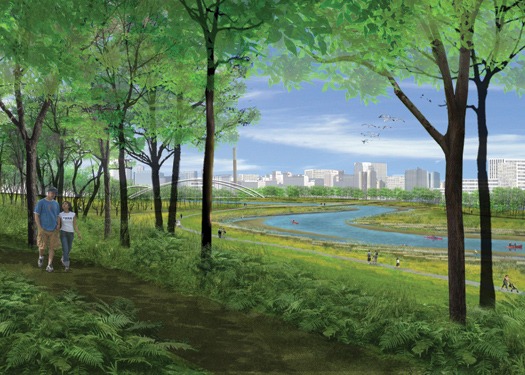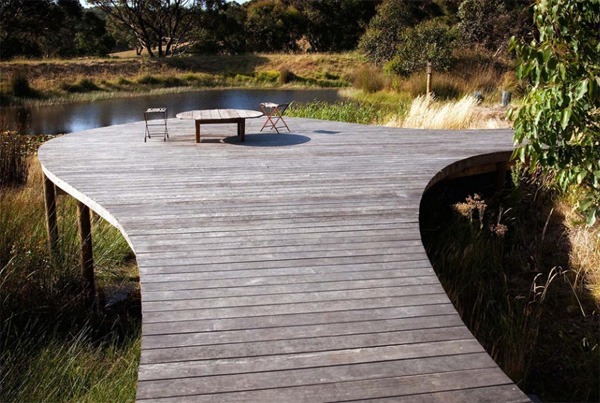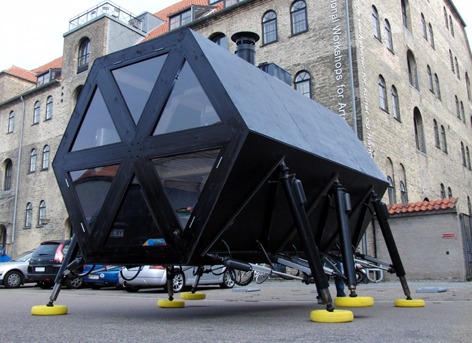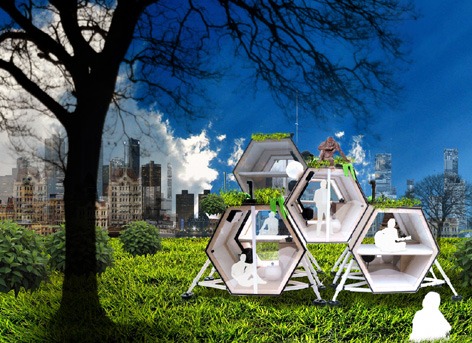The freeway for the electric and hybrid car need not be the highway we are used to.There is no reason why it might not be encased in landscape when the view out is less than appealing: concrete noise barriers or the back of suburban areas or some of the more hostile industrial areas of our large cities.There is no reason why the drive to work need be monotonous…and why the landscape views might not be considered in the same way as a promenade through a garden. We should take advantage of what nature provides and the cultural landscapes we have created.
Tag Archives: Sustainability
Just around the Corner
The Architectural Association in describing ‘Landscape Urbanism’ says what Landscape it is not. It is NOT:
“…understood as a scenographic art, beautifying, greening or naturalising the city.”
And then what it IS;
“…scalar and temporal operations through which the urban is conceived and engaged with.”
Thus, Landscape Urbanism prioritises the phenomenological experience of the city, while distancing itself (perhaps defensively) from the visual aesthetic. Perhaps an ironcial realisation of this preference for the non-aesthetic is the prediction by James Corner of the disappearance of the city into the landscape. Perhaps this prophecy will be realised quite differently than the romantic post-industrial ruin? Corner, typified by the high line project, focuses on the rehabilitation of the abandoned elements of the city and post-industrial landscape.Can landscape urbanism be artfully conceived?
Perhaps the city of the future will afterall disappear under the advance of the landscape, but once again capture something of the beauty which is now itself abandoned by its favourite profession?
In search of Sustainable Gardens…
So what is the sustainable aesthetic about? I suggest a few characteristics might be common to the sustainable garden aesthetic:
* mimicking nature
* minimal interference with the landscape
* native plant selection
* eco-material selection ie timber and stone
* bushland settings
* curved lines
* low water, low chemical and low maintenance
* absence of paths, boundary fences and made roads
For a garden see: http://www.e-ga.com.au
For a plant aesthetic see: http://www.flickr.com/photos/42478440@N00/517961141
For an idea of how art & sustainability (green design) might have a more dramatic relationship also see the El Molino garden, a blend of formalism and naturalism http://www.anthonyexter.com/gardens/el_molino/2.php which possibly focuses on reduced resource use (water and energy) and plant selection , rather than a strictly natural aesthetic in the form, layout and background to the scheme.
Feeling blue seeing red
As many stakeholders in the redevelopment process recognise the issue of urban redevelopment is fraught. When young Swiss rioted during the Opera House riots the world wondered “how and why brutal contestation was possible in the land of wealth, stability, civic discipline” and almost full employment.
One Genevan philosopher of Polish heritage believed the riots were the result of youth who “didn’t know what to do with unlimited freedom in a world of unlimited opportunities.”
The disturbances broke out when in 1980 the young people of Zurich were unable to organise rock concerts due to an unavailability of money and accommodation at the same time as “large sums of money went to the renovation of the Zurich Opera House.”
Beneath the idealic view of Swiss society it was reported that young people were cheated out of a right to Utopia by a recession, did not have stable families, had overworked fathers, cramped and impersonal living conditions in large blocks of flats and that the nuclear family which had replaced extended relational groups had become too small.
The importance of being landed
The Danish artistic trio N55 came up with the concept of the walking house based on the gypsy caravan. Although reminiscent of Archigram’s Walking City, walking house is not an aesthetically sophisticated piece of architecture. However N55 have amazingly managed to achieve real life rather than paper mobility via renewable energy sources – a remarkable feat in anybody’s language!
In Archigram’s Walking City on the Ocean Ron Herron addresses the concept of “indeterminacy” or the idea of an architecture that can change. While N55 are more interested in exploring the idea of property ownership. They describe the walking house as follows:
“WALKING HOUSE is a modular dwelling system that enables persons to live a peaceful nomadic life, moving slowly through the landscape or cityscape with minimal impact on the environment. It collects energy from its surroundings using solar cells and small windmills. There is a system for collecting rain water and a system for solar heated hot water. A small greenhouse unit can be added to the basic living module, to provide a substantial part of the food needed by the Inhabitants. A composting toilet system allows sewage produced by the inhabitants to be disposed of. A small wood burning stove could be added to provide CO2 neutral heating. WALKING HOUSE forms various sizes of communities or WALKING VILLAGES when more units are added together. WALKING HOUSE is not dependant on existing infrastructure like roads, but moves on all sorts of terrain.”
Based on the nomadic culture of the Romani the project asks whether land ownership means some people have more right to stay on the surface of the earth than others. This question is fundamentally anthoprocentric. Of course the basic question could be extended to encompass an ecological perspective and indeed is not dissimilar to eco-centric ethical viewpoints espoused by the conservationist luminary Aldo Leopold.
For landscape architecture the value of land as place rather than passage and the capacity to garden and enjoy gardens are central values. Undoubtably the voice of landscape architects will be heard strongly as the debate proceeds and develops.






